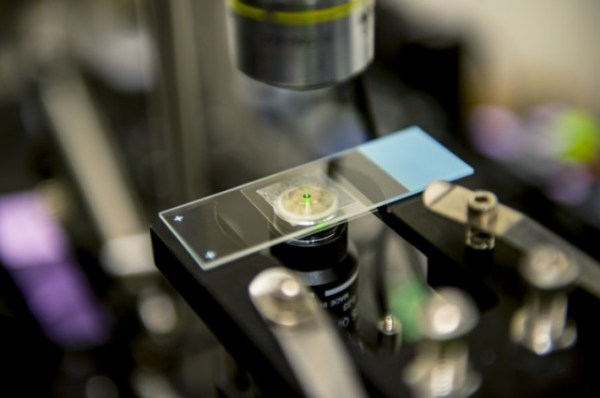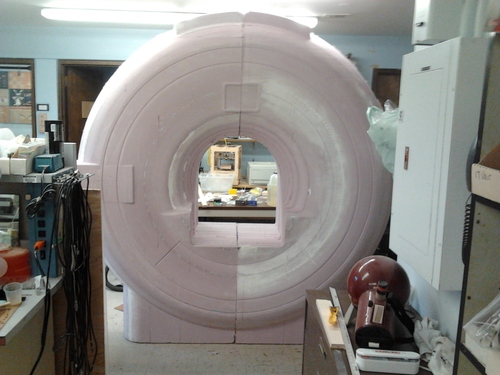For almost two decades there has been research that describes a method to freeze material with nothing but a laser. The techniques have only ever been able to work on single nano-crystals in a vacuum, making it less than functional — or practical. Until now, that is.
Researchers at the University of Washington have figured out how to cool a liquid indirectly using an infrared laser. It works by subjecting a special microscopic crystal to the laser. When the laser hits this crystal, the infrared light turns to the visible spectrum, becoming a reddish green light — which happens to be more energetic than infrared. This shift in energy levels is what causes a change in temperature. The energy (in the way of heat) is sucked from the fluid surrounding the crystal, and as such, causes a drop in the temperature of the liquid. Continue reading “Freezing Stuff With Fricken’ Lasers”













